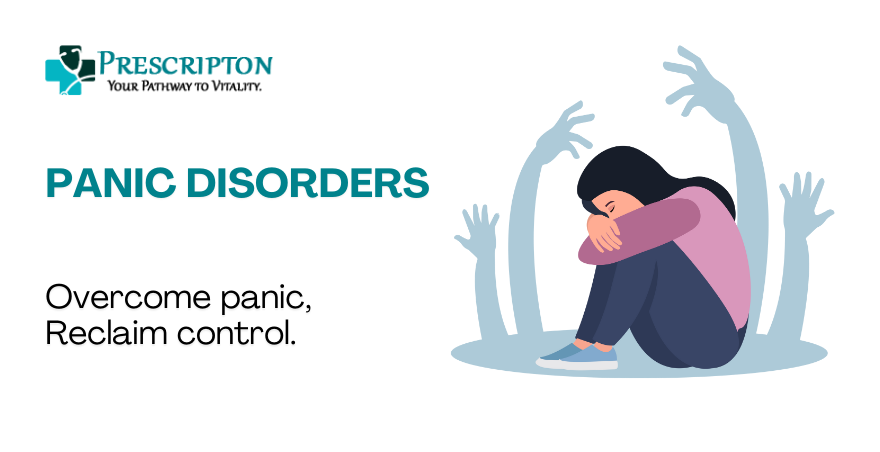
Quick Relief Techniques for Panic Disorder
Panic disorders are a type of anxiety disorder characterized by recurrent and unexpected panic attacks. These attacks can be intense and frightening, often occurring without warning and causing significant distress. Understanding the signs, symptoms, and treatments for panic disorders can help individuals manage their condition and lead a more balanced life. In this blog post, we will explore the key aspects of panic disorders and offer insights into effective management strategies.
What Are Panic Disorders?
Panic disorders involve sudden episodes of intense fear, often accompanied by physical symptoms that can mimic those of a heart attack or other serious conditions. These panic attacks can occur at any time, even during sleep, and often leave individuals feeling drained and fearful of future attacks. To be diagnosed with a panic disorder, an individual must experience recurrent panic attacks and persistent worry about future attacks or their consequences.
Signs and Symptoms of Panic Disorders
Panic attacks typically reach their peak intensity within minutes and can last from several minutes to an hour or longer. The following are common signs and symptoms associated with panic disorders:
- Physical Symptoms:
- Rapid heart rate or palpitations
- Sweating and chills
- Trembling or shaking
- Shortness of breath or feelings of suffocation
- Chest pain or discomfort
- Nausea or abdominal distress
- Dizziness or lightheadedness
- Numbness or tingling sensations
- Hot flashes or chills
- A sense of unreality or detachment from oneself
- Emotional Symptoms:
- Intense fear or anxiety
- Fear of losing control or “going crazy”
- Fear of dying or impending doom
These symptoms can be overwhelming and often lead to avoidance behaviors, where individuals begin to avoid places or situations where they have experienced panic attacks.
Common Triggers for Panic Attacks
While panic attacks can occur without warning, certain triggers may increase the likelihood of an attack. These can include:
- Stressful Situations: High levels of stress at work, school, or home can contribute to panic attacks.
- Traumatic Events: Experiencing or witnessing a traumatic event can trigger panic attacks.
- Major Life Changes: Events such as marriage, divorce, moving, or job changes can be stressful and lead to panic attacks.
- Certain Substances: Stimulants like caffeine and drugs like cocaine can increase the risk of panic attacks.
Diagnosing Panic Disorders
A healthcare professional or mental health specialist can diagnose panic disorders. The diagnosis typically involves a thorough assessment of the individual’s symptoms, medical history, and potential underlying conditions. The healthcare provider may use the Diagnostic and Statistical Manual of Mental Disorders (DSM-5) criteria to confirm the diagnosis of panic disorder.
Treatments for Panic Disorders
Effective treatment for panic disorders often involves a combination of approaches to help individuals manage their symptoms and reduce the frequency of panic attacks. Here are some common treatment methods:
- Cognitive-Behavioral Therapy (CBT): CBT is a highly effective treatment for panic disorders. It helps individuals identify and challenge negative thought patterns and develop coping strategies to manage panic attacks. CBT also focuses on exposure therapy, where individuals gradually face their fears to reduce avoidance behaviors.
- Medication: Antidepressants, such as selective serotonin reuptake inhibitors (SSRIs), and anti-anxiety medications, such as benzodiazepines, can be prescribed to help manage panic disorder symptoms. Medications should be used under the guidance of a healthcare professional, as they can have side effects and potential for dependence.
- Relaxation Techniques: Techniques such as deep breathing, progressive muscle relaxation, and mindfulness meditation can help individuals manage stress and reduce the severity of panic attacks.
- Lifestyle Changes: Regular exercise, a balanced diet, adequate sleep, and reducing caffeine and alcohol intake can have a positive impact on managing panic disorders.
- Support Groups: Connecting with others who have experienced panic disorders can provide emotional support and a sense of community. Support groups offer a safe space to share experiences and coping strategies.
Conclusion
Panic disorders can be challenging, but with the right treatment and support, individuals can effectively manage their symptoms and lead fulfilling lives. If you or someone you know is experiencing panic attacks or showing signs of panic disorder, seeking help from a healthcare professional is an important step. Early intervention and a comprehensive treatment plan can significantly improve outcomes and reduce the impact of panic disorders on daily life. Remember, you’re not alone, and there are effective treatments available to help you regain control and reduce the fear and anxiety associated with panic disorders.
